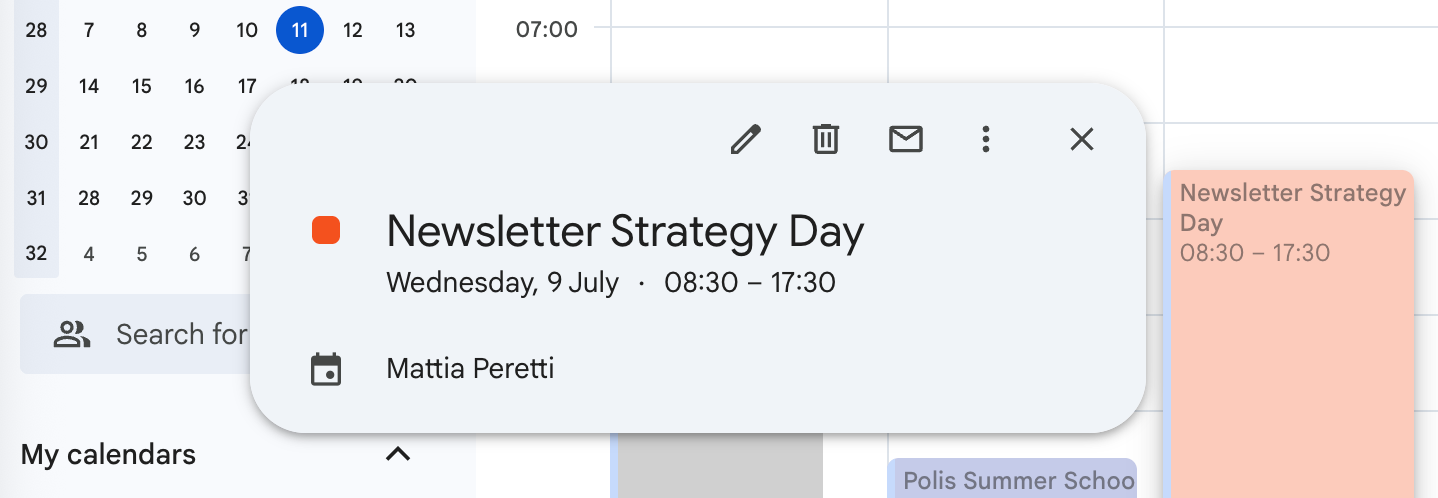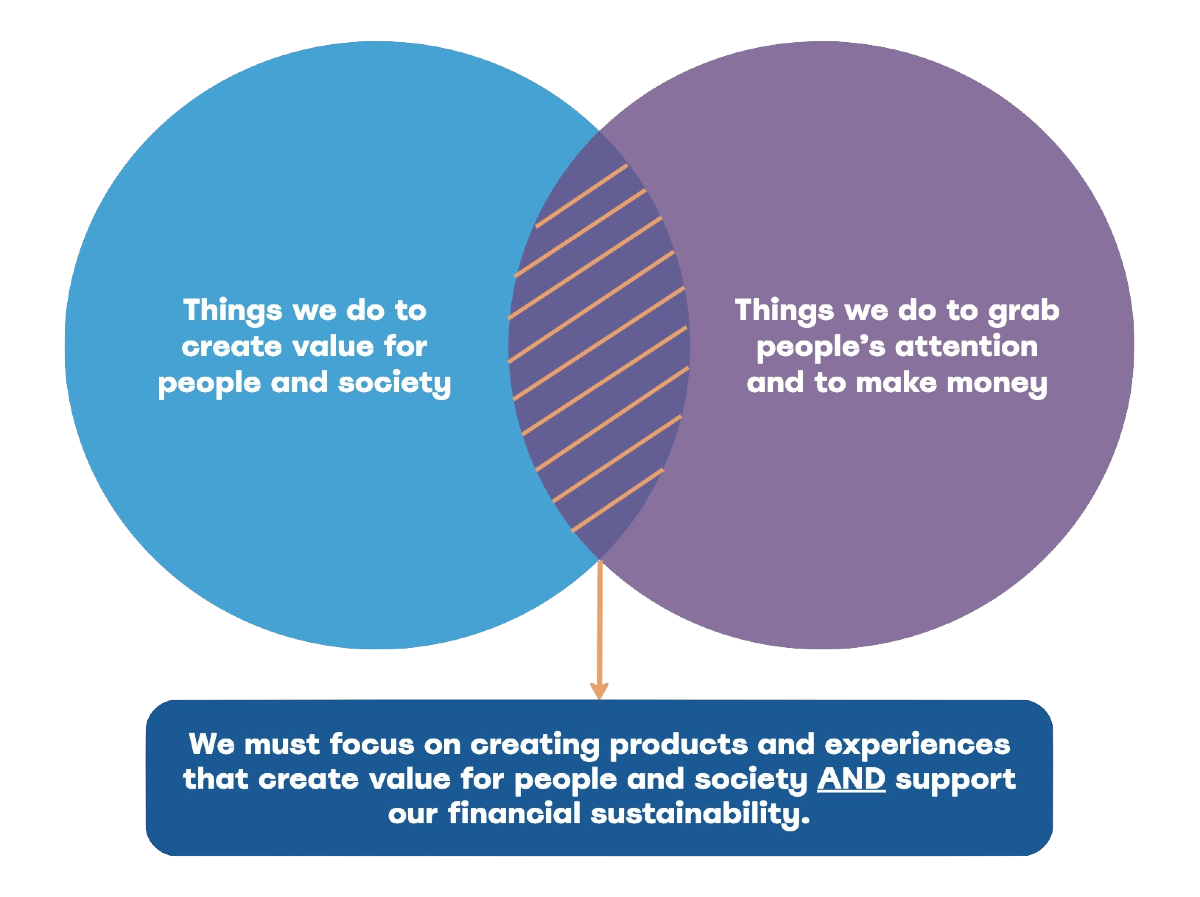🔶 News Alchemists #28: "Start with service: A practical reset for media impact"
Hello and welcome back to the News Alchemists newsletter!
Today, I want to bring you behind the scenes with me, after I spent quite some time last week reflecting on the evolution of this little space we share every week.
(If you're not into this type of 'how the sausage is made' content, no problem. Just scroll down – seven juicy links are waiting for you.)
Lately I've been feeling a little uneasy because I worried that the newsletter's growth had stalled a little.
New signups started being less frequent:

The open rates are still hovering around a solid 60%, but more often just below 60% than just above as it used to be:

And I've not been able to find a second sponsor after the amazing first experience with House of Kaizen.
The stalling was also an internal feeling: my passion for writing this newsletter is as strong as it was on day one, but the pile of ideas I want to test, and additional products I want to offer, kept growing – and with it the frustration of not finding enough time for any of them.
So I blocked an entire day on my calendar to analyse the situation and set a plan for the coming months:

Luckily, I didn't have to do it all by myself. The week before, Matt Cronin of House of Kaizen helped me apply their framework to my own business, to ensure that the needs of my audience (that's you 👋) and the value my product creates for them are aligned.
We reviewed every stage of the subscriber journey, to understand where there were opportunities for improvement (TL;DR: everywhere).

This was incredibly useful, but I also felt quite overwhelmed: here I was staring at a long list of even more opportunities to improve my newsletter, but where to start? I already didn't have enough time before.
Here's where the rules of good storytelling would expect me to say something along the lines of "...and that's when the light bulb went off". But it never works that way – at least not for me.
Rather than a light that suddenly turned on, I had to sit with the overwhelm and discomfort for a while before an important realisation slowly started to emerge: I was worrying about the wrong things, chasing a definition of success that someone else defined for me and that I didn't really believe in.
Take the first and the third signals of alleged stagnation that I shared up top:
Why was I worrying about securing another sponsor? When I started to write this newsletter, I had no plan or ambition to monetise it in the first year. But I found one sponsor, felt good because I was making some money out of this (I mean, who wouldn't), and so I started chasing more sponsorships when I wasn't actually ready to do that in a systematic way.
And you know what happens when you chase sponsorships? You convince yourself that you need more subscribers as soon as possible because you feel like you need a big reach to justify sponsors' investments. But they might need that reach, not me.
I was following a growth playbook that might work for many others but doesn't speak to my values and my vision for this newsletter.
I aim to be useful to you, providing hope and inspiration – and that's true whether five people are reading or five thousands; whether I'm making any money off this work or not.
Long-term that's not sustainable, but my plan was clear: I'm writing this newsletter as an experiment in 2025; no revenue ambitions, no chasing 'growth' for the sake of it. At the end of the year I'll take stock and see where we go from there.
I just sort of forgot all of that, distracted by the early success.
Let me be clear: I do want more subscribers because I do want more people to find hope and inspiration in the people-centric vision for journalism that we're building together.
And, let's be honest, seeing the number of subscribers grow just feels good and there's nothing wrong about it. As long as you don't let it distract you from what truly matters.
(So yeah, if you want to recommend this newsletter to someone or tell the internets how much you love it, you will still make me very very happy thank you very much 🙃)
As Matt told me at the end of our chat (I'm paraphrasing): "You're living on your own skin the tension that media organisations face when it comes to prioritising between chasing revenue or focusing on creating value for their audience and trusting that revenue will come as a result of the value you provide."
That does sound familiar indeed...

Thank you for sharing this journey with me. If you have faced, or are facing similar challenges, I'd love to exchange notes.
It's time for the links 📚
P.S.: Big thanks to Sudeshna and Mark for responding to last week's edition with suggestions on finding a healthier approach to productivity – and to Liz for continuing and expanding the conversation on news avoidance!
1. Start with service: A practical reset for media impact 👉 LINK
"Real change doesn’t happen because we tell people what to care about. It happens when we give them tools to act on what they already care about. This requires adding an essential middle step: service."
🧞Madison Karas and 🧞Patrick Boehler wrote a fantastic piece on how a service framework can guide journalism through systemic disruption. And I don't want to say much more about it because you really, really, really should go read it.
"Service means helping people navigate their lives better with information. [...] Journalism that helps people navigate their lives better isn’t just more likely to survive, it’s more likely to matter."
2. New toolkit helps journalists build trust through public collaboration 👉 LINK
The Public Interest News Foundation in the UK just launched the 'Co-creational news media toolkit'. It includes a set of resources and case studies to help news organisations involve the public in the production and dissemination of high-quality news and information. The goal is to support the transition from publishing journalism for the public to creating journalism with the public.
3. How a Danish news service made a profit with its transcription tool 👉 LINK
Will I ever tire of bringing up 🧩 Zetland in this newsletter? Not until they stop being an inspiration and bringing me hope that journalism organisations can be good, smart, and sustainable. Did you know that they developed a transcription tool called 'Good Tape' that, three years in, has more than 2.5 million users worldwide, and brings in roughly $3 million in annual recurring revenue (ARR)?
4. 10 formats that outperform the article in today’s news apps 👉 LINK
The death of the article is predicted every few years – but it's nowhere in sight. Nevertheless, asking yourself if an article is the best way to deliver information and value to your audience is always a good idea. Look beyond the clickbait-y headline and take this post as a useful reminder of that, and as a source of inspiration to test a new format – instead of an article or to complement one.
(Apropos of nothing: this trend on LinkedIn to write in short sentences of 5-10 words max and start a new paragraph for every sentence? Not a fan.)
5. In 2025, journalism is adjacent to democracy, rather than essential to it 👉 LINK
🧞Adam Thomas writes the excellent 'Theory of Change' newsletter: every week he shares one framework for nonprofit leaders, founders, and creators who want to build more adaptable and focused organisations.
In a recent special edition, Adam shared some thoughts on a paper published by UK think-tank Demos about repairing "the broken relationship between citizen and state". (Sounds familiar?) What he noticed is that a 32-page paper on how we might repair democracy only mentions journalism once.
But rather than stopping at lamenting journalism's alleged irrelevance, Adam invites us to reflect on the many opportunities that journalism can seize to contribute to the democratic renewal.
6. Sometimes I find the news is a bit too gory or depressing. I think you should add a Good News Section. 👉 LINK
10-year old Maya has some reader feedback and editorial suggestions for 🧩 The Economist: "If you cannot find any good news, maybe you could make some puzzles or draw some pictures or comics."
7. The News Impact Network Cookbook: A collection of recipes to innovate journalism and the people who make it 👉 LINK
In one of the many Slack communities I'm in, someone resurfaced the 'News Impact Network Cookbook', a fun resource I helped put together back in 2018, combining the insights of 15 European media leaders who took part in a programme I used to run at the EJC. And I thought it would be fun to share it with you. 🧑🍳 The recipes include:
- Change infusion: How to create vivid experiences to foster change
- Cross-team paella: It's all about the people
- Upside-down reporting cake: Baking community in the storytelling process
@jesikah, thanks for resurfacing the cookbook!


Member discussion